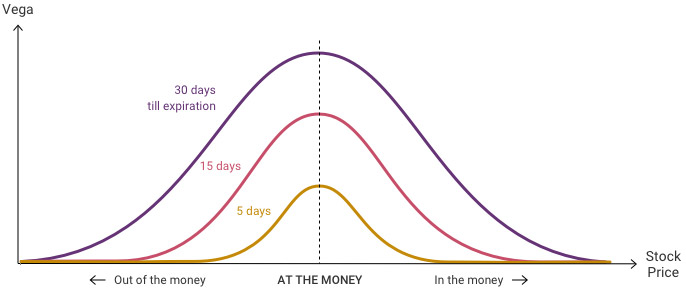Options involve risk and are not suitable for all investors. Certain requirements must be met to trade options. Before engaging in the purchase or sale of options, investors should understand the nature of and extent of their rights and obligations and be aware of the risks involved in investing with options. Please read the options disclosure document titled "Characteristics and Risks of Standardized Options (PDF)" before considering any option transaction. You may also call the Investment Center at 877.653.4732 for a copy. A separate client agreement is needed. Multi-leg option orders are charged one base commission per order, plus a per-contract charge.
The maximum loss, gain and breakeven of any options strategy only remains as defined so long as the strategy contains all original positions. Trading, rolling, assignment, or exercise of any portion of the strategy will result in a new maximum loss, gain and breakeven calculation, which will be materially different from the calculation when the strategy remains intact with all of the contemplated legs or positions. This is applicable to all options strategies inclusive of long options, short options and spreads. To learn more about Merrill's uncovered option handling practices, view
Naked Option Stress Analysis (NOSA) (PDF).
Early assignment risk is always present for option writers (specific to American-style options only). Early assignment risk may be amplified in the event a call writer is short an option during the period the underlying security has an ex-dividend date. This is referred to as dividend risk.
Long options are exercised and short options are assigned. Note that American-style options can be assigned/exercised at any time through the day of expiration without prior notice. Options can be assigned/exercised after market close on expiration day. View specific
Merrill Option Exercise & Assignment Practices (PDF).
Supporting documentation for any claims, comparison, recommendations, statistics, or other technical data, will be supplied upon request.
Please read the options disclosure document (PDF)
What is Vega?
Vega measures the amount of increase or decrease in an option premium based on a 1% change in implied volatility.
Vega is a derivative of implied volatility. Implied volatility is defined as the market's forecast of a likely movement in the underlying security. Implied volatility is used to price option contracts and its value is reflected in the option's premium. Should the market anticipate a greater movement in a security, implied volatility will be higher and the option will be more expensive and vice versa. Vega measures how much the option premium will change if implied volatility were to move by 1%.
Select to close help pop-up
An option is at the money if the strike price of the option is equal to the market price of the underlying security.
Select to close help pop-up
A call option is out of the money if the strike price is greater than the market price of the underlying security. A put option is out of the money if the strike price is less than the market price of the underlying security.
Select to close help pop-up
A call option is in the money if the strike price is less than the market price of the underlying security. A put option is in-the-money if the strike price is greater than the market price of the underlying security.

For illustrative purposes only.
Select to close help pop-up
The amount by which an option is in-the-money
Select to close help pop-up
The amount by which an option total premium exceeds its intrinsic value.
How is Vega used?
Long and Short Option's Vega
Long options have a positive Vega and short options have a negative Vega. When buying an option, the purchaser wants the premium to increase and when selling an option, the seller wants the premium to decrease. Should implied volatility increase, there will be an increase in the option's premium. Inversely, if there is a decrease in implied volatility, there will be a decrease in the option's premium. This is why Vega is positive for long (purchased) positions and negative for short (sold) positions.
Vega changes when there are larger price swings (higher implied volatility) which can be equated to higher uncertainty. Lower implied volatility can be connected to lower uncertainty, which equates to less dramatic swings of the underlying security.
A long Vega portfolio means there is positive exposure to increases in implied volatility and a short Vega portfolio is indicative of volatility vulnerability. Remember, high volatility can result in drastic market swings. Volatility typically has a negative correlation to the market – meaning spiked volatility can be reflective of downward market velocity. Managing a portfolio's Vega exposure can help understand volatility risk and the trader's comfort level.
Measuring Volatility
Vega can be used to measure volatility exposure in multi-leg option strategies or an option's portfolio.
For example:
Long 1 XYZ 60 Call with 60 Days to Expiration at +.50 Vega (Long Volatility)
Short 1 XYZ 60 Call with 30 Days to Expiration at -.30 Vega (Short Volatility)
Net Vega: + .20 Vega
This trade is long Vega and has positive volatility exposure.
What are other factors to consider?
Vega and implied volatility can change without any movement in the underlying. Vega should not be confused with volatility. Volatility can be an implied or a historical figure - Vega measures an option position's sensitivity to implied volatility.